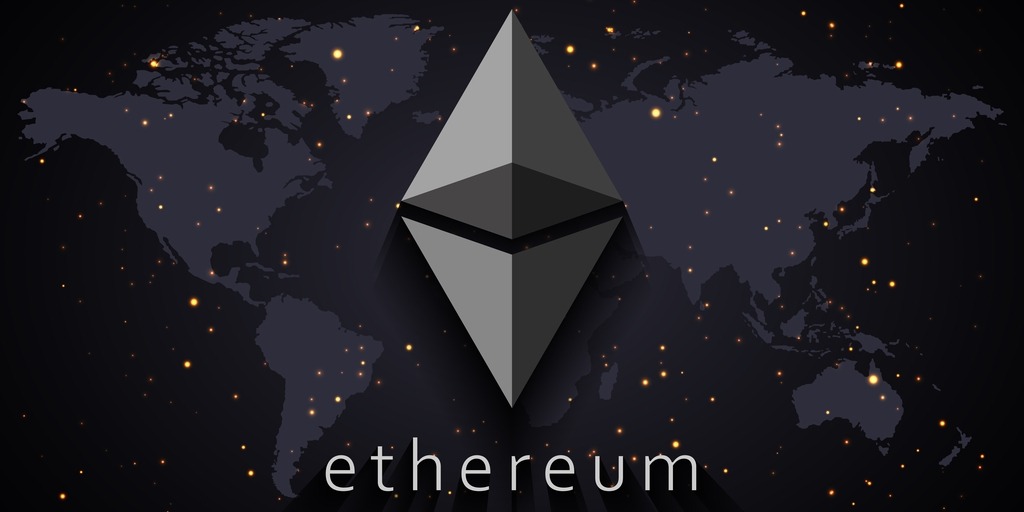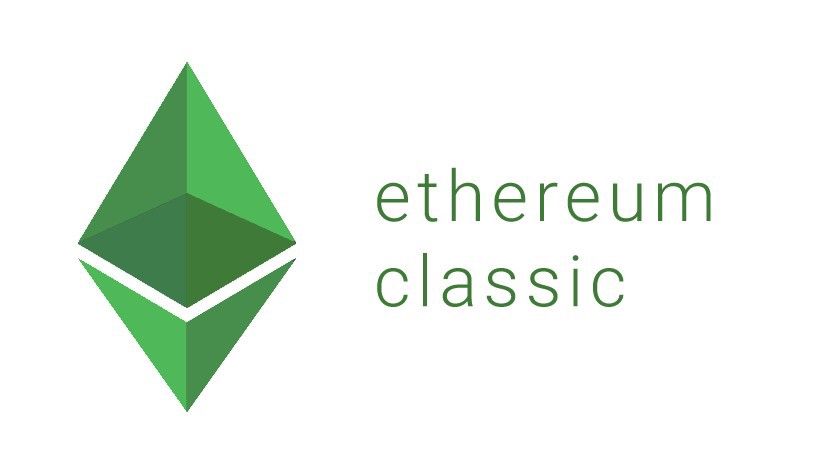Intriguing Ethereum Ether: How and Why It’s Fallen Out of Investor Favor In 2024
Ethereum Ether (ETH) has long been one of the most popular cryptocurrencies, second only to Bitcoin in market capitalization and perceived importance. Once hailed as the backbone of decentralized applications (dApps) and the future of finance, Ether has seen declining enthusiasm among investors in recent years. From waning market dominance to shifts in investment preferences, the cryptocurrency is no longer the unchallenged favorite in the eyes of many investors.
The decline in Ether’s favorability is not a simple phenomenon—it results from a complex interplay of market dynamics, technological challenges, regulatory scrutiny, and competition from newer, more innovative platforms. This article delves into the reasons behind Ether’s diminished appeal, analyzing the factors that have contributed to its shifting position in the cryptocurrency market.
A Brief Overview of Ethereum Ether and Its Role in Ethereum
Ether is the native cryptocurrency of the Ethereum blockchain, which was launched in 2015 by Vitalik Buterin and a team of developers. Ethereum introduced the concept of smart contracts, self-executing agreements with terms directly written into code, which laid the foundation for decentralized finance (DeFi), non-fungible tokens (NFTs), and blockchain-based applications.
Ether’s Utility in the Ethereum Ecosystem
- Transaction Fees: Ether is used to pay “gas fees,” or the computational cost of executing transactions and smart contracts on the Ethereum network.
- Staking and Security: With Ethereum’s transition to Proof of Stake (PoS) in 2022 via the Merge, Ether plays a critical role in network security. Users stake their Ether to participate in validating transactions and earn rewards.
- Investment Vehicle: Beyond its utility, Ether is viewed as a store of value and an investment asset, appealing to retail and institutional investors alike.
While Ether has enjoyed significant success, cracks in its dominance have emerged over the years, signaling a shift in market sentiment.
1. Waning Market Dominance
Ether’s position in the cryptocurrency market has been overshadowed by the growing number of alternative blockchains and cryptocurrencies. According to data from CoinMarketCap, Ether’s market dominance has steadily declined since its peak in 2017 when it captured over 30% of the total cryptocurrency market. As of 2024, its dominance hovers around 18%, reflecting reduced investor confidence.
The Rise of Ethereum Competitors
Ethereum’s success has inspired numerous competitors, often referred to as “Ethereum killers,” such as Solana, Binance Smart Chain, Avalanche, and Cardano. These platforms have attracted users and developers by addressing Ethereum’s pain points, such as high transaction fees and slow processing times. The proliferation of Layer-1 and Layer-2 solutions has diluted Ether’s market share.
2. High Transaction Fees and Scalability Issues
One of Ethereum’s most persistent challenges has been its high transaction fees, also known as gas fees. During periods of network congestion, gas fees can skyrocket, making Ethereum less attractive for small-scale transactions and retail users.
Impact of High Gas Fees
- DeFi users often face exorbitant costs when executing trades or interacting with smart contracts.
- NFT creators and buyers, who heavily rely on Ethereum, have migrated to cheaper alternatives like Polygon, Solana, and Binance Smart Chain.
Efforts to Address Scalability
Ethereum’s transition to PoS and the introduction of Layer-2 scaling solutions like Optimism, Arbitrum, and zkSync have alleviated some congestion. However, critics argue that these solutions are fragmented and do not fully solve the scalability issue, especially when compared to newer blockchains designed with scalability in mind.
3. Regulatory Challenges and Investor Hesitation
Cryptocurrencies have come under increasing regulatory scrutiny globally, and Ether is no exception. The evolving regulatory landscape has introduced uncertainties that have made some investors wary of holding Ether.
Key Regulatory Issues
- Staking Classification: Following Ethereum’s move to PoS, there has been debate over whether staked Ether constitutes a security under U.S. laws. The SEC has hinted that staking services may be subject to regulation, adding risk for Ether holders.
- Environmental Concerns: Before the Merge, Ethereum faced criticism for its energy-intensive Proof of Work (PoW) mechanism. While PoS has mitigated this issue, lingering concerns about blockchain energy use have kept some institutional investors at bay.
4. Declining Institutional Interest
Institutional investors were once eager to gain exposure to Ether, viewing it as a high-growth asset with strong fundamentals. However, the narrative has shifted as Ethereum faces increasing competition and skepticism over its ability to sustain dominance.
Shift Toward Other Assets
- Bitcoin’s Role as Digital Gold: Many institutional investors prefer Bitcoin for its simplicity and store-of-value properties. Ether, with its complex ecosystem and evolving use cases, carries more uncertainty.
- Emerging Tokens and Protocols: Funds and venture capital firms are diversifying into other cryptocurrencies and blockchain projects, such as Solana, Polkadot, and Avalanche, which they perceive as having higher growth potential.
5. Stiff Competition from Layer-2 Solutions and Alternative Chains
While Ethereum remains the most widely used blockchain for dApps, its ecosystem has become fragmented due to the rise of Layer-2 solutions. While these solutions improve scalability, they also divert activity away from Ethereum’s mainnet, diluting Ether’s utility.
Alternative Layer-1 Blockchains
- Solana: Known for its high throughput and low fees, Solana has become a popular choice for developers building DeFi and NFT projects.
- Polygon: Although technically a Layer-2 solution, Polygon operates semi-independently of Ethereum and has gained traction as a cost-effective platform for gaming and metaverse projects.
- Binance Smart Chain: With its centralized approach, BSC offers faster transactions and lower fees, attracting users who prioritize cost over decentralization.
6. Ether’s Price Volatility
Cryptocurrency prices are notoriously volatile, and Ether is no exception. While volatility attracts traders, it can deter long-term investors looking for stability. Ether’s price fluctuations have often been more pronounced than Bitcoin’s, leading some investors to consider it a riskier asset.
Factors Driving Volatility
- Speculation surrounding Ethereum’s upgrades, such as the Merge and upcoming scalability improvements.
- Macroeconomic conditions, including interest rate hikes and shifts in risk appetite among institutional investors.
- Competition from emerging technologies, which creates uncertainty about Ethereum’s future.
7. Shifting Focus Within the Crypto Space
The cryptocurrency market has matured significantly over the past decade. While early investors were drawn to Ether’s potential to revolutionize decentralized computing, attention has shifted toward emerging narratives, such as:
- AI and Blockchain Integration: Tokens associated with AI-focused projects are gaining traction.
- Real-World Asset Tokenization: Investors are showing interest in blockchains that facilitate tokenized real-world assets, such as real estate and commodities.
- Stablecoins and CBDCs: Stablecoins and central bank digital currencies (CBDCs) are capturing attention for their utility in payments and financial systems.
These shifts have diverted investment away from Ether and toward other assets that align with new market trends.
8. The Rise and Plateau of NFTs and DeFi
Ethereum played a pivotal role in the rise of two major blockchain applications: DeFi and NFTs. However, both sectors have experienced slowing growth, impacting Ether’s demand.
NFT Market Cooling
While 2021 and early 2022 saw explosive growth in the NFT market, interest has waned due to:
- Oversaturation of NFT collections.
- Declining speculative interest.
- Competition from blockchains like Solana and Polygon for NFT projects.
DeFi Challenges
DeFi platforms have faced hurdles such as:
- Regulatory scrutiny over lending and staking protocols.
- Security concerns due to frequent hacks and exploits.
- User migration to alternative chains offering lower fees and higher yields.
Ethereum’s Response: Can Ether Regain Favor?
Ethereum developers and supporters remain optimistic about the blockchain’s future, citing several initiatives aimed at addressing its challenges and restoring investor confidence.
1. Continued Network Upgrades
Ethereum’s roadmap includes several upgrades designed to enhance scalability, security, and usability:
- Danksharding: Aimed at improving data availability and reducing transaction costs.
- Verkle Trees: An upgrade to improve the efficiency of Ethereum’s storage and data validation.
- EIP-4844 (Proto-Danksharding): Introduced to further optimize Layer-2 rollups.
2. Emphasis on Sustainability
Ethereum’s PoS mechanism has significantly reduced its energy consumption, making it more appealing to environmentally conscious investors. This shift could attract institutional funds prioritizing ESG (Environmental, Social, and Governance) considerations.
3. Expanding Use Cases
Developers are working to expand Ethereum’s applications beyond DeFi and NFTs, exploring areas such as gaming, metaverse projects, and decentralized autonomous organizations (DAOs). Diversifying its ecosystem could drive renewed demand for Ether.
Also, read – ETFSwap (ETFS) Vs. Ethereum (ETH) Vs. Avalanche (AVAX): Which Platform Offers The Best ROI For 2024?
Mistakes Ethereum (ETH) Made: What Should Not Be Repeated to Stay on Investor’s List
Ethereum, the second-largest cryptocurrency by market capitalization, has played a pivotal role in the development of blockchain technology, pioneering the decentralized finance (DeFi) sector, and enabling the growth of non-fungible tokens (NFTs). Despite its immense influence, Ethereum has also made several mistakes throughout its journey. These missteps—ranging from technical issues to management decisions—have had significant consequences on its reputation and market position. For Ethereum to remain a top choice for investors, it must learn from these errors and avoid repeating them.
In this article, we will explore the major mistakes Ethereum has made and why these should serve as lessons for the future of blockchain and cryptocurrency projects.
1. Scalability Issues: The Impact of High Gas Fees
Ethereum’s initial success came with the creation of smart contracts and decentralized applications (dApps), but one of the earliest issues that Ethereum faced was scalability. The Ethereum network was not designed to handle the immense growth of decentralized applications and DeFi platforms that it would eventually foster. As a result, users experienced slow transaction speeds and high gas fees, particularly during periods of high network demand.
- Mistake: Ethereum’s Proof-of-Work (PoW) consensus mechanism could only process a limited number of transactions per second (TPS), typically around 15-30. This created a bottleneck, causing delays and driving up transaction fees, which made the network less user-friendly, especially for smaller transactions.
- Investor Impact: This scalability bottleneck discouraged users and developers, as the network became too costly and inefficient for many types of decentralized applications. Investors lost confidence in the platform’s ability to scale effectively, causing some to reconsider their positions.
Lesson for the Future: Ethereum has since begun transitioning to a Proof-of-Stake (PoS) consensus mechanism with its Ethereum 2.0 upgrade, which promises to drastically improve scalability. However, to remain attractive to investors, Ethereum must continue focusing on scalability solutions such as sharding and layer 2 protocols to ensure that the network can scale without compromising on performance or cost-efficiency.
2. The DAO Hack and the Hard Fork Controversy
In 2016, Ethereum was thrust into a major crisis when the DAO (Decentralized Autonomous Organization), an ambitious project built on the Ethereum blockchain, was hacked. The attacker exploited a vulnerability in the DAO’s code and drained over 3.6 million Ether, worth around $50 million at the time.
- Mistake: Ethereum’s response to the DAO hack was to conduct a controversial hard fork, which effectively reversed the transactions associated with the attack and returned the stolen funds to investors. While this was seen as a way to protect investors, it raised concerns about the immutability and decentralization of the Ethereum network. A significant portion of the Ethereum community, including prominent figures like Vitalik Buterin, advocated for the hard fork to protect the integrity of the platform.
- Investor Impact: The decision to hard fork was divisive, leading to the creation of Ethereum Classic (ETC), a separate blockchain that maintained the original code and refused to reverse the transactions. This split created uncertainty among investors and resulted in a loss of trust for some in the project’s commitment to immutability and decentralization.
Lesson for the Future: Ethereum’s decision to hard fork in response to the DAO hack raised questions about the extent to which blockchain platforms should intervene in the case of hacks or other catastrophic events. To maintain investor confidence, Ethereum must avoid future actions that undermine its core principles of decentralization and immutability. Instead, the focus should be on robust security measures, bug bounties, and smart contract audits to prevent exploits in the first place.
3. Lack of a Clear and Efficient Governance Model
Ethereum’s governance model has been a point of contention for many years. While Ethereum has a large and active community of developers, miners, and stakeholders, there has often been confusion about how decisions are made and who gets to make them. This has led to several issues, including delays in upgrades and proposals being abandoned or heavily modified.
- Mistake: Ethereum’s governance model lacks clear decision-making processes, and disagreements among community members often result in fragmentation. For instance, Ethereum’s move to Ethereum 2.0 has been a long and drawn-out process with frequent delays. In addition, the lack of clarity around proposals like Ethereum Improvement Proposals (EIPs) sometimes led to confusion and infighting.
- Investor Impact: Investors want to see a clear roadmap and consistent development. The uncertainty surrounding decision-making and frequent delays in key upgrades eroded investor confidence, as they feared that the network could fall behind its competitors.
Lesson for the Future: Ethereum must streamline its governance model to ensure that major decisions are made more efficiently and transparently. A more defined and accountable process for decision-making can improve the clarity of the Ethereum project’s future direction, helping retain investor trust and ensuring timely upgrades.
4. Inefficient Energy Consumption (Before Ethereum 2.0)
Before Ethereum’s transition to PoS, Ethereum used a Proof-of-Work consensus mechanism that required miners to solve complex mathematical problems, which consumed vast amounts of energy. The Ethereum network was often criticized for its high carbon footprint, especially as the popularity of the network grew.
- Mistake: Ethereum’s PoW model was energy-intensive, and the environmental impact of such a system raised concerns among investors, developers, and environmental activists. As the network grew, the environmental cost of maintaining the blockchain became more difficult to ignore.
- Investor Impact: The environmental concerns surrounding Ethereum’s energy consumption created negative press and affected Ethereum’s public image. This could have driven away investors who were seeking more sustainable and eco-friendly investments, particularly as other cryptocurrencies, like Cardano, positioned themselves as more energy-efficient alternatives.
Lesson for the Future: Ethereum’s transition to PoS with Ethereum 2.0 is a step in the right direction, as it will dramatically reduce energy consumption and make the network more environmentally friendly. This should continue to be a priority for Ethereum, as sustainability has become an increasingly important consideration for investors.
5. Security Flaws in Smart Contracts
Smart contracts are one of Ethereum’s key innovations, enabling decentralized applications to run without intermediaries. However, vulnerabilities in smart contract code have led to numerous security issues, including hacks, bugs, and exploits. A prominent example is the Parity wallet hack, where a bug in the wallet’s code led to the loss of 150,000 ETH.
- Mistake: The lack of comprehensive testing and auditing of smart contracts has led to several high-profile hacks. While the Ethereum ecosystem has implemented better security protocols over time, the early adoption phase was marked by a lack of standardization in contract development and security auditing.
- Investor Impact: Smart contract vulnerabilities undermined confidence in the safety of dApps built on Ethereum, making investors wary of the potential risks involved in investing in Ethereum-based projects. The resulting loss of funds and reputation also negatively impacted Ethereum’s market value during these times.
Lesson for the Future: Ethereum must continue to prioritize security at the protocol level, ensuring that all smart contracts deployed on its blockchain undergo thorough testing and auditing. By providing better tools and frameworks for developers, Ethereum can reduce the risk of exploits and ensure that its ecosystem remains secure and reliable.
6. Lack of Regulatory Clarity
As the Ethereum network gained prominence, it quickly attracted regulatory scrutiny. However, there was a significant lack of clarity about how Ethereum and its native token, Ether (ETH), would be treated under various jurisdictions. In particular, questions around whether Ether should be classified as a security or a commodity have remained unresolved for years.
- Mistake: Ethereum did not proactively address the regulatory concerns surrounding its network. While it made efforts to engage with regulators, the uncertainty around legal and tax treatment made it difficult for institutional investors and businesses to confidently adopt Ethereum-based solutions.
- Investor Impact: Investors tend to shy away from assets that are subject to regulatory uncertainty. The unclear regulatory status of Ether prevented many traditional financial institutions from adopting or investing in the Ethereum ecosystem, limiting the network’s potential for mainstream growth.
Lesson for the Future: Ethereum needs to engage with regulators and policymakers to ensure that there is a clear legal framework around the use and trade of Ether. By creating a more transparent and regulated environment, Ethereum can attract institutional investors and foster mainstream adoption, improving its long-term viability.
Conclusion: Learning from Past Mistakes
Ethereum’s history is filled with groundbreaking achievements and critical missteps. While many of the mistakes made in the past have been addressed or are in the process of being corrected (such as the transition to Ethereum 2.0), the project must remain vigilant. By focusing on scalability, security, efficient governance, and regulatory compliance, Ethereum can continue to thrive and maintain its position as a top blockchain platform.
For Ethereum to stay on the investor’s list, it must learn from past errors and make thoughtful decisions that prioritize long-term growth and sustainability. By addressing these challenges head-on, Ethereum can pave the way for the next generation of decentralized applications and remain a cornerstone of the blockchain ecosystem for years to come.
The Future of Ether: A Crossroads
Ether’s fall from investor favor does not necessarily signify the end of its relevance. As the backbone of the Ethereum ecosystem, it remains an essential asset for transaction fees, staking, and ecosystem development. However, its journey forward will depend on Ethereum’s ability to innovate, adapt, and compete in an increasingly crowded and competitive market.
The cryptocurrency market is dynamic, and investor sentiment can shift rapidly based on technological advancements, macroeconomic trends, and regulatory developments. While Ether faces significant challenges, its strong developer community, established ecosystem, and ongoing improvements position it as a resilient player in the evolving blockchain landscape.
Stay informed with daily updates from Blockchain Magazine on Google News. Click here to follow us and mark as favorite: [Blockchain Magazine on Google News].
Get Blockchain Insights In Inbox
Stay ahead of the curve with expert analysis and market updates.
latest from tech
Disclaimer: Any post shared by a third-party agency are sponsored and Blockchain Magazine has no views on any such posts. The views and opinions expressed in this post are those of the clients and do not necessarily reflect the official policy or position of Blockchain Magazine. The information provided in this post is for informational purposes only and should not be considered as financial, investment, or professional advice. Blockchain Magazine does not endorse or promote any specific products, services, or companies mentioned in this posts. Readers are encouraged to conduct their own research and consult with a qualified professional before making any financial decisions. The featured image used is just a creative depiction of the title and it does not intend to hurt sentiments of any person or institution. If it hurts anyone sentiments, please do not hesitate to reach out to Blockchain Magazine.

 Bitcoin
Bitcoin  Ethereum
Ethereum  XRP
XRP  Tether
Tether  Solana
Solana  USDC
USDC  Dogecoin
Dogecoin  Cardano
Cardano  Lido Staked Ether
Lido Staked Ether  TRON
TRON  Wrapped Bitcoin
Wrapped Bitcoin  Chainlink
Chainlink  Wrapped stETH
Wrapped stETH  Avalanche
Avalanche  Sui
Sui  Stellar
Stellar  Litecoin
Litecoin  Toncoin
Toncoin  Shiba Inu
Shiba Inu  LEO Token
LEO Token  Hedera
Hedera  MANTRA
MANTRA  USDS
USDS  Hyperliquid
Hyperliquid  WETH
WETH  Polkadot
Polkadot  Bitcoin Cash
Bitcoin Cash  Bitget Token
Bitget Token  Ethena USDe
Ethena USDe  Wrapped eETH
Wrapped eETH  Uniswap
Uniswap  Monero
Monero  NEAR Protocol
NEAR Protocol  Pepe
Pepe  WhiteBIT Coin
WhiteBIT Coin  Aave
Aave  Bittensor
Bittensor  Ondo
Ondo  Aptos
Aptos  Internet Computer
Internet Computer  Dai
Dai  Official Trump
Official Trump  Ethereum Classic
Ethereum Classic  Mantle
Mantle  Tokenize Xchange
Tokenize Xchange  OKB
OKB  Gate
Gate  sUSDS
sUSDS  Coinbase Wrapped BTC
Coinbase Wrapped BTC 




